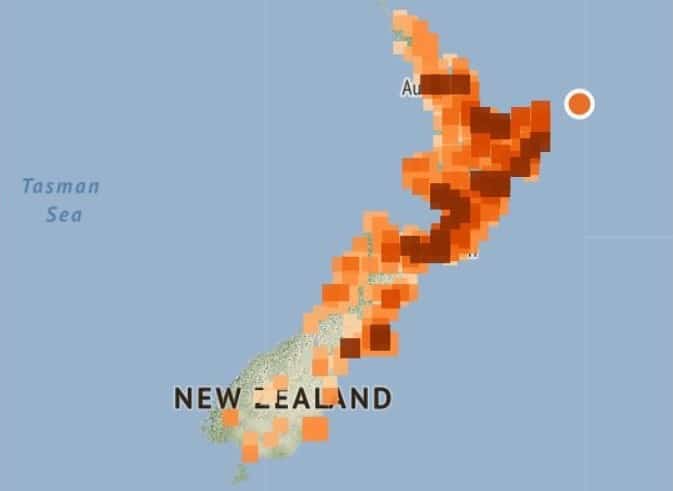Evacuation behaviour of Wellington residents following the 5 March 2021 East Cape earthquake
By Dr Lauren Vinnell
The early morning East Cape earthquake on the 5th of March 2021, was felt along the length of Aotearoa. Over 50,000 reports of shaking were submitted to GeoNet, reaching from Doubtless Bay to Invercargill. A team of researchers from Massey University’s Joint Centre for Disaster Research were interested in how people in Te-Whanganui-a-Tara (Wellington) reacted to the earthquake – whether they evacuated in case of a tsunami and why they did or didn’t, what information they looked for or received, and what additional information they would have found useful.
Almost 300 people answered questions about their experience during and immediately following the East Cape earthquake. About a third of our participants who felt the earthquake and live in a tsunami hazard zone evacuated. Among this group, roughly equal numbers of people said they evacuated because of the National Emergency Management Agency’s “Long or strong, get gone” messaging, because they knew generally that an earthquake can trigger a tsunami, or that they were influenced by people around them, such as their neighbours.
A small percentage (about 5%) felt prolonged (longer than 1 minute) and/or strong shaking but did not evacuate. Most people who did not evacuate said they did not think the earthquake was strong enough to trigger a tsunami.
GeoNet was the most reported source of information, followed by the news, then social media, then official sites (like emergency management groups). It is important to note here that most people who told us that they got information from social media didn’t specify further (e.g., whose account/profile) so it’s possible that people used official sources more than the data suggests. Information about the earthquake was highly sought or received, particularly severity (magnitude and damage) and location. This was followed, although to a much lesser extent, by information about tsunami risk and evacuation. Concordantly, people commonly reported that they would have liked to have information about tsunami threat and evacuation. The most reported desired information type (i.e., that people wanted but didn’t receive) was an Emergency Mobile Alert.
These findings suggest that some people want to be explicitly told that they are not at risk from a tsunami following an earthquake. Issues such as warning fatigue mean it isn’t feasible to send out alerts to tell people that they are not in danger, but there might be ways to make it easier and faster for people to find that information for themselves.
Some of our recommendations from this research include education around the role of Emergency Mobile Alerts and continuing the “Long or strong, get gone” messaging, encouraging the use of official information sources, and remembering that people are still processing and understanding the earthquake in the moments we would expect them to make decisions about tsunami threat and evacuation.
The research article ‘Evacuation Behavior and Information Needs of Wellington, Aotearoa New Zealand Residents Following the 5 March 2021 Mw 7.3 East Cape Earthquake’ has been published in Seismological Research Letters 2022 and is available on request by emailing Lauren Vinnell.




